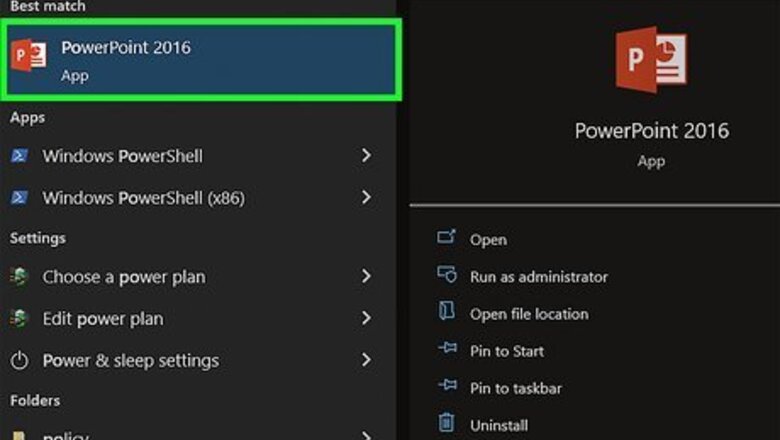
views
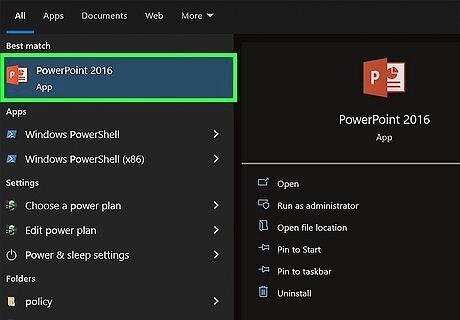
Open PowerPoint. Double-click the PowerPoint app icon, which resembles a white "P" on an orange background. This will open the PowerPoint home page.
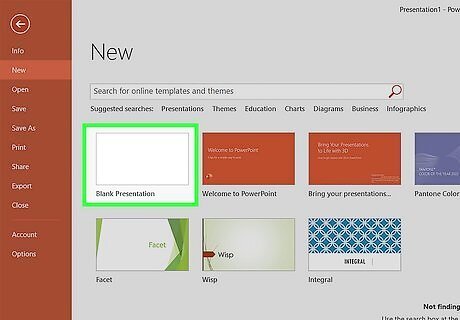
Click Blank Presentation. You can either select here or go to File > New > Blank Presentation. On Mac, simply opening PowerPoint might open a new presentation depending on your settings. If it does, skip this step.
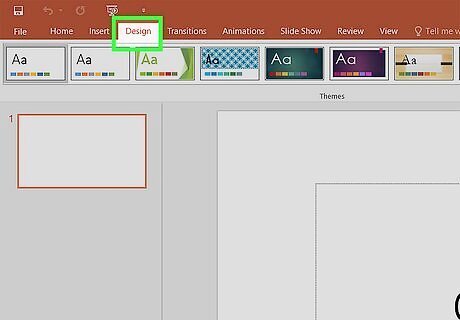
Click the Design tab. It's in the editing ribbon above your PowerPoint with File and Home.
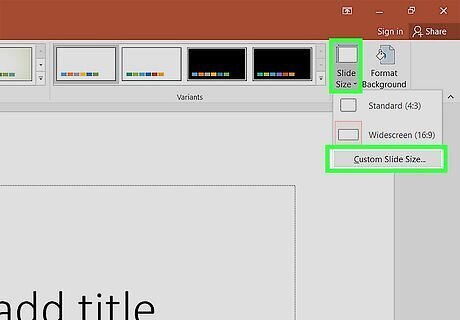
Click Slide Size, Custom Slide Size, and then choose the page orientation and dimensions. This will set the overall look of the PowerPoint.

Click the View tab. This tab is in the editing ribbon at the top of the PowerPoint window. Clicking it opens a toolbar below. On Mac, this option is on the top menu bar.

Click Slide Master. You'll find this option near the left side of the toolbar in the "Master Views" section. Doing so will open the Slide Master tab on the left side of the PowerPoint window. On Mac, first click Master, then click Slide Master.
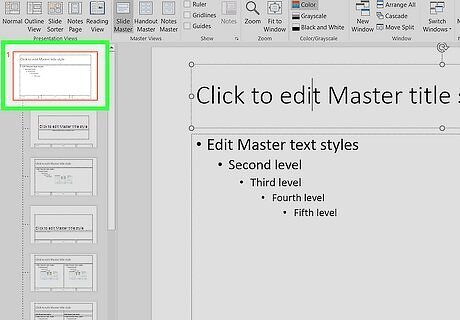
Select a slide format to edit. Click one of the slide templates in the left-hand column of options. There will be one slide for each type of slide that you can use (e.g., a title slide, a basic content slide, etc.). Once you select a slide, you can pick a theme from the "Themes" drop-down that's located above the slide master panel. You can also apply backgrounds by clicking Background styles. You can also click Format Background... in the drop-down menu to customize color options like base color, gradient, and brightness.
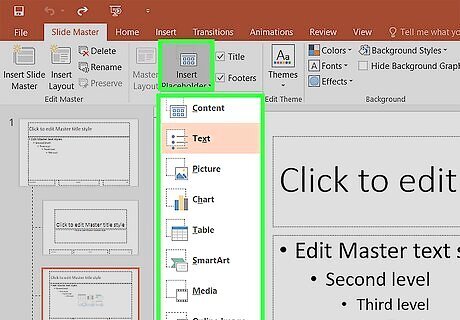
Click Insert Placeholder. It's on the left side of the Slide Master tab and will give you options that you can add to your slides for later use. A drop-down menu will appear with the following options: Content - Inserts a written content outline. On a Mac, you have a "Vertical" option for Content as well. Text - Inserts a text box. On a Mac, you have a "Vertical" option for Text as well. Picture - Inserts a section for a picture. Chart - Inserts a section for a chart. Table - Inserts a section for a table. Smart Art - Inserts a section for smart art items. Media - Inserts a section for a video. Online Image - Inserts a section from which you can add an online image.
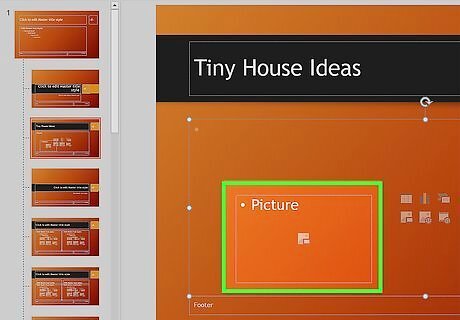
Drag and drop a placeholder to a slide. Once you've decided which placeholder you want, like a picture box, drag it from the drop-down to a slide. Continue to adjust where it is on the slide by dragging and dropping it as much as needed; to resize the placeholder, you can drag the corner of one of its borders. You may have to perform additional steps before the item is added to your template. For example, clicking Online Image will prompt you to search for an image and click Insert.
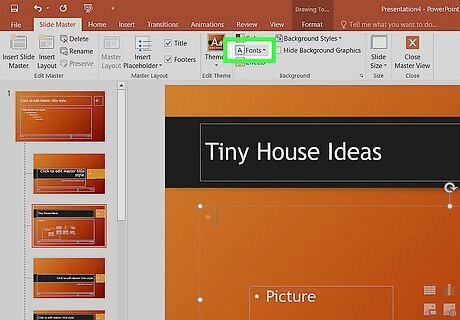
Select a template font. Click Fonts in the "Background" section, then click a font in the drop-down menu.
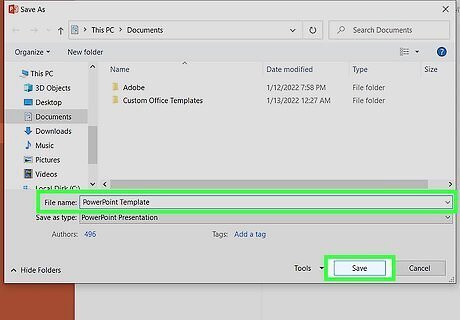
Save your template. If you have an existing PowerPoint that you want to save as a template, you'll want to follow these steps. This process differs between the Windows and Mac versions of PowerPoint: Windows: Click File > Save As, select a location and enter a name for your template. Click the Save as type drop-down box, click PowerPoint Template, and then click Save. Mac: Click File > Save as Template, enter a file name, and click Save.




















Comments
0 comment